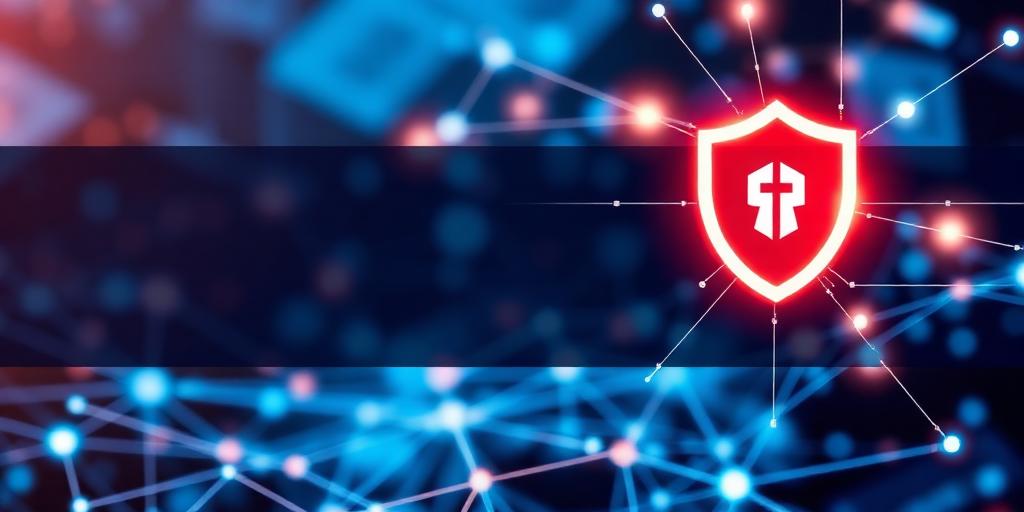Digital transformation is no longer an aspiration but an imperative for organizations seeking to remain competitive and relevant in today's dynamic landscape. While the benefits of embracing cloud computing, AI, IoT, and advanced analytics are undeniable, this seismic shift introduces a complex array of cybersecurity challenges. Securing a digital transformation is paramount; neglecting it can lead to catastrophic data breaches, operational disruptions, and severe reputational damage. This comprehensive guide outlines the critical strategies required to fortify your enterprise against emerging threats during this pivotal evolution.
The very nature of digital transformation involves expanding attack surfaces, integrating disparate systems, and migrating sensitive data to new environments. This often leads to:
- Expanded Attack Surface: New cloud environments, APIs, and interconnected devices create more entry points for malicious actors.
- Data Vulnerabilities: Data migration and increased data flow across hybrid environments introduce new exposure risks.
- Legacy System Integration: Older systems, not designed for modern threats, can become weak links when integrated with new digital infrastructure.
- Complexity: The sheer complexity of new architectures makes it harder to identify and patch vulnerabilities.
- Talent Gap: A shortage of cybersecurity expertise can hinder effective implementation and management of security controls.
Key Pillars of a Secure Digital Transformation
Comprehensive Risk Assessment
Before embarking on any major digital initiative, a thorough and proactive risk assessment is indispensable. This is the cornerstone of any secure digital transformation strategy. Organizations must identify potential threats, evaluate existing vulnerabilities, and understand the impact of various attack vectors on new and integrated systems. This includes assessing risks related to data privacy, regulatory compliance, supply chain security, and operational resilience. Regular, iterative assessments should be integrated into the transformation lifecycle.
Identity and Access Management (IAM) Overhaul
As perimeters dissolve, identity becomes the new security boundary. A robust IAM framework, embracing Zero Trust principles, is crucial. This involves:
- Strong Authentication: Implementing multi-factor authentication (MFA) across all systems and user types.
- Least Privilege: Ensuring users and systems only have the minimum necessary access to perform their functions.
- Centralized Identity Management: Consolidating identity stores to provide a unified view and control over access rights.
- Privileged Access Management (PAM): Rigorously controlling and monitoring access for administrative accounts.
Cloud Security by Design
Cloud adoption is central to most digital transformations, but it demands a "security by design" approach. Security considerations must be embedded from the initial architecture phase, not as an afterthought. Key aspects include:
- Cloud Security Posture Management (CSPM): Continuously monitoring cloud environments for misconfigurations and policy violations.
- Workload Protection: Securing applications and data within cloud instances.
- Network Segmentation: Implementing micro-segmentation within cloud environments to limit lateral movement of threats.
- Data Encryption: Ensuring data is encrypted both in transit and at rest within cloud services.
Data Governance and Protection
Data is the lifeblood of the digital enterprise, and its protection is paramount. A comprehensive data governance strategy, aligned with regulatory requirements (e.g., GDPR, CCPA), is essential. This includes:
- Data Classification: Categorizing data sensitivity to apply appropriate protection levels.
- Data Loss Prevention (DLP): Implementing tools and policies to prevent sensitive data from leaving controlled environments.
- Data Masking/Anonymization: Protecting sensitive information during development and testing phases.
- Retention Policies: Defining and enforcing policies for data storage and deletion.
Security Culture and Training
Technology alone is insufficient. Human factors remain a significant vulnerability. Cultivating a strong security culture through continuous training and awareness programs is vital. All employees, from the executive suite to the front lines, must understand their role in maintaining security. Regular phishing simulations, best practice reminders, and incident reporting procedures contribute to a resilient human firewall.
Vendor Risk Management
Digital transformation often involves integrating numerous third-party services and software. Each vendor represents a potential risk vector. A robust vendor risk management program is critical, encompassing:
- Due Diligence: Thoroughly vetting vendors' security postures before engagement.
- Contractual Obligations: Including clear security clauses and audit rights in contracts.
- Ongoing Monitoring: Continuously assessing vendor compliance and security performance.
Continuous Monitoring and Incident Response
The threat landscape is dynamic, requiring constant vigilance. Implementing continuous monitoring capabilities, leveraging Security Information and Event Management (SIEM) and Security Orchestration, Automation, and Response (SOAR) solutions, is fundamental. An effective incident response plan, regularly tested through tabletop exercises, ensures that the organization can detect, contain, and recover from security incidents efficiently, minimizing potential damage.
Digital transformation offers unprecedented opportunities for growth and innovation. However, realizing these benefits hinges on a proactive, integrated, and comprehensive cybersecurity strategy. By prioritizing risk assessment, modernizing IAM, building security into cloud architectures, safeguarding data, fostering a security-aware culture, managing vendor risks, and maintaining continuous vigilance, organizations can navigate the complexities of digital change securely. A robust cybersecurity posture is not merely a cost center but a strategic enabler, transforming risk into resilience and ensuring the sustained success of your digital journey.




